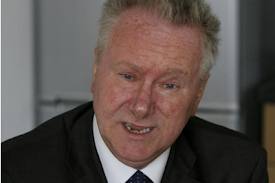From my previous blog on this subject, readers will know that the Chief Executive of Visit Scotland, Malcolm Roughead, offered what appeared to be cast iron assurances that Visit Scotland was compliant with the law on equality. To quote from the Visit Scotland response :
"I have referred your letter to my colleague Chris McCoy, our Equality & Diversity manager, who informs me that she has had confirmation from the Equality & Human Rights Commission [EHRC] who are fully supportive of our Equality Mainstreaming Report & Objective and are content that we are complying with the legislation as it stands."
Since that response and because of the unsatisfactory nature of it, I referred my concerns to the EHRC in Scotland and, amongst other matters, asked :
Can you please advise if the EHRC is advising public bodies generally on whether or not they are compliant in relation to the general and specific equality duties, or only in response to specific requests from organisations ?
 The response from the EHRC flashed me back to the early 90's when Jack Nicholson chomped his way through the scenery of the film 'A Few Good Men' and blistered that killer phrase into film history :
The response from the EHRC flashed me back to the early 90's when Jack Nicholson chomped his way through the scenery of the film 'A Few Good Men' and blistered that killer phrase into film history :"You want the truth ? You can't handle the truth."
The response from the EHRC as to whether they were handing out gold stars of compliance with the specific duties to our public bodies ? :
"On your final question, the Commission has not been in touch with any organisation to state that they are compliant."
I have now asked Visit Scotland to provide a copy of the evidence it has that the
EHRC confirms Visit Scotland is compliant with the legislation.
I do believe we, the citizens of Scotland, can handle the truth on whether or not our public bodies are compliant with the law on equality.
I do believe we, the citizens of Scotland, can handle the truth on whether or not our public bodies are compliant with the law on equality.

























